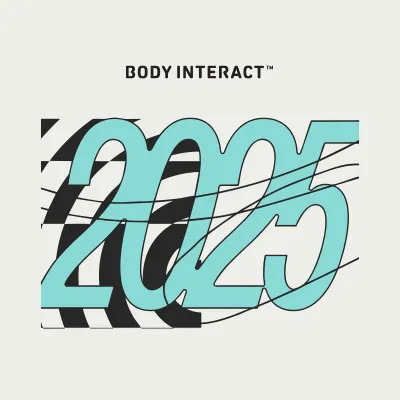Simulation-Based Learning with Virtual Patients for Education and Training in Emergency Situations
In the world of emergency healthcare, it is important to be well-prepared and knowledgeable. Simulation-based learning is widely considered as the optimal alternative for teaching and evaluating medical students, as it has the potential to improve the quality of education, training, and assessment.[1]
Simulation training has proven its effectiveness, improving the knowledge-based performance of medical students. [2] In order for students to improve their skills in a controlled environment, virtual patients have become a component of simulation training.
In this article, we explore the transformative potential of SBL, focusing on the remarkable contribution of Virtual Patients to revolutionize education and training in emergency situations.
The Evolution of Simulation-Based learning
In the ever-evolving landscape of emergency response and healthcare, the integration of cutting-edge technologies has become crucial to enhance the skills and preparedness of professionals. Simulation-Based Learning (SBL) with Virtual Patients stands out as a game-changer, offering a dynamic and immersive educational experience. Body Interact, as a virtual patient simulator tool is transforming the way medical students learn, practice, and enhance their expertise. With its cutting-edge features and lifelike scenarios, Body Interact is revolutionizing education by offering a learning experience for medical students.
Virtual Patients: A Leap Forward in Realism
Virtual Patients, powered by advanced simulation technologies, offer an unprecedented level of realism in medical training. These digital entities mimic real-life patients with astonishing accuracy, allowing practitioners to engage in realistic scenarios without the associated risks. The immersive nature of Virtual Patients provides an invaluable opportunity for learners to hone their decision-making, critical thinking, and communication skills in a dynamic, high-stakes setting.
Body Interact: Transforming Learning Experiences
Explore Body Interact, a pioneering platform that takes Virtual Patients to the next level. This interactive simulation tool offers a comprehensive range of scenarios specifically designed for emergency situations. Learners can engage with realistic patient cases, make decisions, and witness the immediate consequences of their actions in a risk-free environment. The platform´s dynamic feedback system ensures a continuous learning loop, promoting a reflective and iterative approach to skill development.
Benefits of Simulation with Virtual Patients
Safe Learning Environment
- Creating a learning environment is essential, in emergency situations where quick
decisions can make all the difference. Virtual patients offer a safe space for learners
to practice and learn from their mistakes without endangering patient´s safety.
Realism and Diversity
- One of the advantages of virtual patient simulations is their ability to replicate a
range of realistic emergency scenarios. By immersing medical students in these
simulations they gain experience developing effective strategies for handling various
situations.
Body Interact provides a diverse array of virtual patients, each with unique medical
histories, symptoms, and responses to treatment.
The platform accurately replicates the physical and emotional aspects of patient
encounters, creating an authentic learning experience.
Collaborative learning
- Body Interact, as simulation tool, facilitates collaborative learning by allowing multiple
users to participate in a scenario simultaneously, promoting effective communication
and teamwork.
Performance Assessment
- Debriefing is a crucial part of simulation based-learning. Overall virtual patient
simulations create a learning experience by providing an environment, realistic
scenarios, and ample opportunities for repetitive practice. Furthermore, with Body
Interact the students not be able only to repeat the clinical scenarios, but also review
the actions, step by step, minute by minute, check the scientific references, and in the
debriefing analyze the scores and receive all the information needed to better
understand what they have made and what they should improve.
The Impact on Emergency Preparedness
- The integration of Simulation-Based Learning with Virtual Patients, especially
through Body Interact, has a profound impact on emergency preparedness. Learners
can develop and refine their skills in a risk-free environment, ensuring that when faced
with a real emergency, they are equipped with the confidence and expertise to provide
optimal care.
The Simulation-Based Learning approach with virtual patients has revolutionized education and training in emergency healthcare. By providing a safe, realistic, and adaptable learning environment, virtual patient simulations empower medical students to refine their skills, enhance collaboration, and ultimately improve patient outcomes.
As technology continues to advance, the integration of virtual patients into emergency training programs will undoubtedly play a pivotal role in shaping the next generation of highly skilled and confident healthcare providers, leading to significantly improved outcomes for patients, namely, Patient Safety. [3]
Way for a future where professionals are not just well-trained but exceptionally prepared to navigate the complexities of emergency response with confidence and competence!
The Evolution of Simulation-Based learning
1 – Elshama, S. How to apply Simulation-Based Learning in Medical Education?. Iberoamerican Journal of Medicine 02 (2020). DOI 10.5281/zenodo.3685232.
2 -McInerney N, Nally D, Khan MF, Heneghan H, Cahill RA. Performance effects of simulation training for medical students – a systematic review. GMS J Med Educ. 2022 Nov 15;39(5):Doc51. doi: 10.3205/zma001572.
3- World Health Organization. Patient safety. (11 September 2023). https://www.who.int/news-room/fact-sheets/detail/patient-safety
Funded by the European Union. Views and opinions expressed are however those of the author(s) only and do not necessarily reflect those of the European Union or the European Education and Culture Executive Agency (EACEA). Neither the European Union nor EACEA can be held responsible for them.









